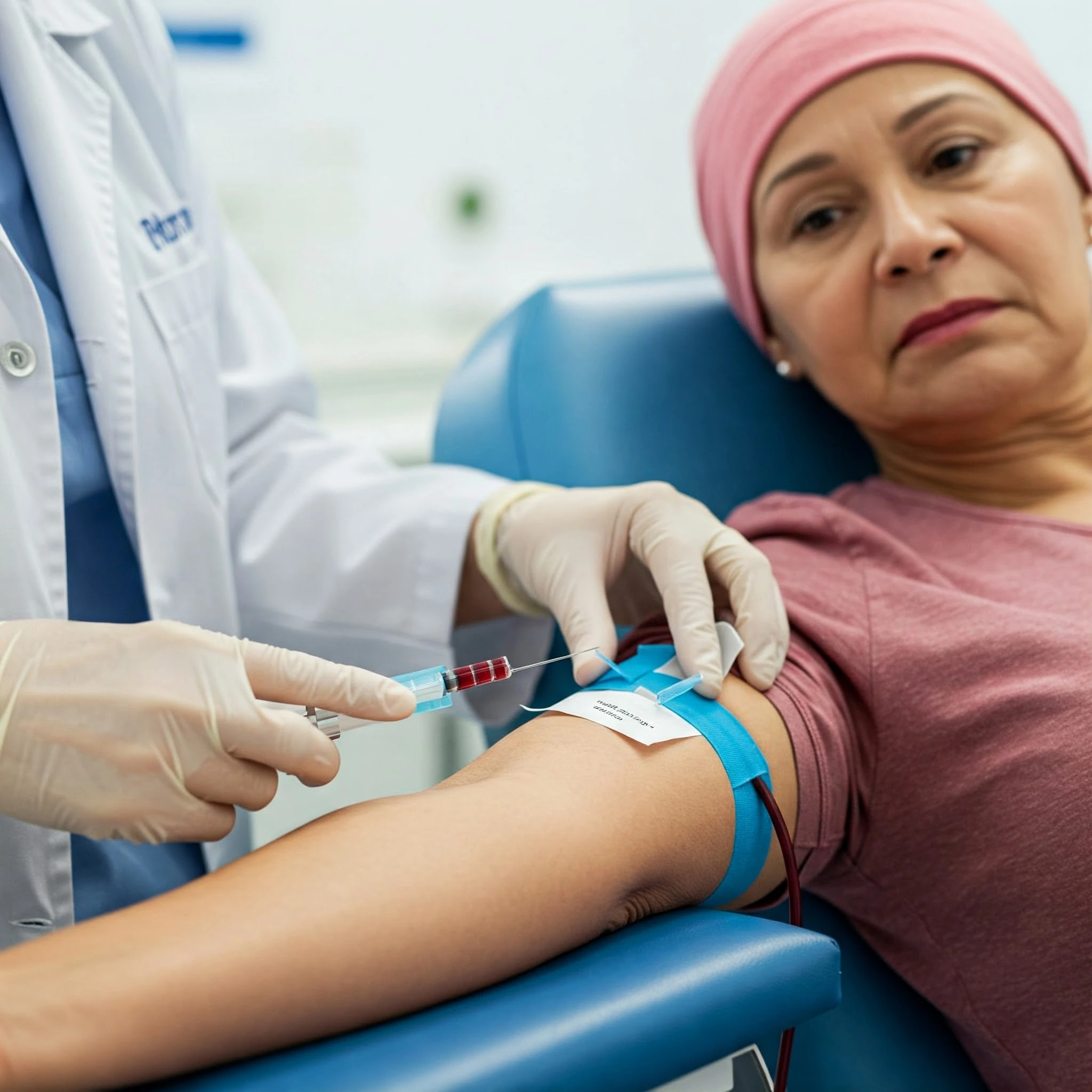More
Weight Loss Program
Diabetes Management
Health Hub
Companionship services
Attendant Service
Meditation
Yoga Session
Dietitian

ESR Levels in Cancer Patients: What You Need to Know
Imagine your body as a bustling city. When something's off, like an unexpected traffic jam, it's a sign to investigate. Similarly, the Erythrocyte Sedimentation Rate (ESR) test acts as a signal, indicating inflammation in the body, which could be a potential red flag for conditions like cancer.
At TruePal, we prioritize holistic health monitoring. Understanding ESR levels can be pivotal in early cancer detection and management. Let’s explore the same in this blog.
What is ESR (Erythrocyte Sedimentation Rate)?
ESR measures how quickly red blood cells settle at the bottom of a test tube over an hour. A faster rate suggests inflammation in the body. While it's a non-specific test, it's valuable in assessing various conditions, including infections, autoimmune diseases, and cancers.
How is ESR Related to Cancer?
Cancer can trigger inflammation, leading to elevated ESR levels. However, it's essential to note that a high ESR doesn't confirm cancer but indicates that further investigation is warranted.
What is a High ESR Level in Cancer Patients?
- Normal ESR Values:
- Men: 0–15 mm/hr
- Women: 0–20 mm/hr
In cancer patients, ESR levels can exceed these norms, sometimes reaching above 100 mm/hr, especially in aggressive or advanced stages.
When Do Doctors Recommend an ESR Test in Cancer Cases?
- Initial Diagnosis: To assess inflammation levels.
- Monitoring Disease Progression: Tracking changes over time.
- Checking for Relapse: Identifying potential recurrence.
- Evaluating Treatment Response: Gauging the effectiveness of therapies.
Can a High ESR Level Confirm Cancer?
No, a high ESR alone doesn't confirm cancer. It's a piece of the puzzle, prompting further diagnostic tests like imaging or biopsies to determine the underlying cause.
ESR Trends During Cancer Treatment
Monitoring ESR levels during treatment can provide insights:
- Decreasing ESR: May indicate a positive response to therapy.
- Increasing ESR: Could suggest disease progression or recurrence.
ESR in Different Types of Cancer
- Blood Cancers (e.g., Leukemia, Lymphoma): Often present with significantly elevated ESR levels.
- Solid Tumors (e.g., Breast, Lung, GI): ESR levels can vary based on tumor size and stage.
- Metastatic Cancer: Advanced stages may show higher ESR due to widespread inflammation.
Factors Affecting ESR in Cancer Patients
Several factors can influence ESR levels:
- Age
- Anemia
- Infections
- Autoimmune conditions
- Medications
Therefore, ESR results should always be interpreted in the broader clinical context.
ESR vs Other Cancer Biomarkers
While ESR indicates inflammation, other markers provide more specific information:
- C-Reactive Protein (CRP): Another inflammation marker, often used alongside ESR.
- Tumor Markers (e.g., CA-125, PSA): Specific to certain cancers, aiding in diagnosis and monitoring.
How TruePal Helps You Monitor Cancer Biomarkers Safely
At TruePal, we offer:
- Comprehensive Diagnostic Tools: Including ESR tests.
- Lab Partnerships: Ensuring accurate and timely results.
- Home Sample Collection: For convenience and comfort.
- Expert Review Process: Guiding you through your health journey.
Final Thoughts: ESR is a Clue, Not a Conclusion
ESR serves as an important indicator but isn't definitive on its own. It's a starting point, guiding further diagnostic steps.
At TruePal, we're committed to supporting you through every stage of your health journey.
Why TruePal is Your Trusted Partner in Monitoring Cancer Biomarkers
This can serve as a natural transition to highlight TruePal's services, reinforcing the company's role in offering diagnostic tools and expert guidance for cancer monitoring.
Keeping tabs on your ESR is just one piece of the bigger picture. At TruePal, our health checkup services are designed to catch red flags early, whether it’s inflammation, organ health, or nutritional gaps. Regular screening can help you stay one step ahead, especially if you have a family history of cancer or chronic illnesses. Because when it comes to your health, knowing early is everything.
FAQs on ESR in Cancer
Q1. What is a dangerously high ESR?
ESR levels above 100 mm/hr are considered significantly elevated and warrant further investigation.
Q2. Can ESR go down after cancer is cured?
Yes, effective treatment can reduce inflammation, leading to decreased ESR levels.
Q3. How often should ESR be checked in cancer?
It varies based on individual cases. Your healthcare provider will recommend a suitable monitoring schedule.
Related Topics
Categories
All
Mutual Funds
NPS
Health Insurance
EPF
Chat with us
